trimethylthioacetic S-acid

trimethylthioacetic S-acid structure
|
Common Name | trimethylthioacetic S-acid | ||
|---|---|---|---|---|
| CAS Number | 55561-02-9 | Molecular Weight | 118.19700 | |
| Density | 0.966 g/cm3 | Boiling Point | 126ºC at 760mmHg | |
| Molecular Formula | C5H10OS | Melting Point | N/A | |
| MSDS | N/A | Flash Point | 23.9ºC | |
| Name | 2,2-dimethylpropanethioic S-acid |
|---|---|
| Synonym | More Synonyms |
| Density | 0.966 g/cm3 |
|---|---|
| Boiling Point | 126ºC at 760mmHg |
| Molecular Formula | C5H10OS |
| Molecular Weight | 118.19700 |
| Flash Point | 23.9ºC |
| Exact Mass | 118.04500 |
| PSA | 55.87000 |
| LogP | 1.48890 |
| Index of Refraction | 1.453 |
Synonym:Trimethylthiolacetic aci Section 2 - COMPOSITION, INFORMATION ON INGREDIENTS
Risk Phrases: 10 35 Section 3 - HAZARDS IDENTIFICATION EMERGENCY OVERVIEW
Flammable. Causes severe burns.Stench. Potential Health Effects Eye: Contact with eyes may cause severe irritation, and possible eye burns. Skin: May cause severe irritation and possible burns. Ingestion: Not available. Inhalation: May cause severe irritation of the respiratory tract with sore throat, coughing, shortness of breath and delayed lung edema. Causes chemical burns to the respiratory tract. Chronic: Not available. Section 4 - FIRST AID MEASURES Eyes: Immediately flush eyes with plenty of water for at least 15 minutes, occasionally lifting the upper and lower eyelids. Skin: Flush skin with plenty of water for at least 15 minutes while removing contaminated clothing and shoes. Ingestion: Do NOT induce vomiting. If conscious and alert, rinse mouth and drink 2-4 cupfuls of milk or water. Inhalation: Remove from exposure and move to fresh air immediately. Notes to Physician: Section 5 - FIRE FIGHTING MEASURES General Information: As in any fire, wear a self-contained breathing apparatus in pressure-demand, MSHA/NIOSH (approved or equivalent), and full protective gear. Extinguishing Media: Not available. Section 6 - ACCIDENTAL RELEASE MEASURES General Information: Use proper personal protective equipment as indicated in Section 8. Spills/Leaks: Absorb spill with inert material (e.g. vermiculite, sand or earth), then place in suitable container. Section 7 - HANDLING and STORAGE Handling: Not available. Storage: Flammables-area. Section 8 - EXPOSURE CONTROLS, PERSONAL PROTECTION Engineering Controls: Use adequate general or local exhaust ventilation to keep airborne concentrations below the permissible exposure limits. Exposure Limits CAS# 55561-02-9: Personal Protective Equipment Eyes: Wear safety glasses and chemical goggles if splashing is possible. Skin: Wear appropriate protective gloves and clothing to prevent skin exposure. Clothing: Wear appropriate protective clothing to minimize contact with skin. Respirators: Wear a NIOSH/MSHA or European Standard EN 149 approved full-facepiece airline respirator in the positive pressure mode with emergency escape provisions. Section 9 - PHYSICAL AND CHEMICAL PROPERTIES Physical State: Liquid Color: colorless Odor: None reported. pH: Not available. Vapor Pressure: Not available. Viscosity: Not available. Boiling Point: 125.0 - 127.0 deg C @ 760.00m Freezing/Melting Point: 0 deg C Autoignition Temperature: Not available. Flash Point: 23 deg C ( 73.40 deg F) Explosion Limits, lower: Not available. Explosion Limits, upper: Not available. Decomposition Temperature: Solubility in water: Specific Gravity/Density: .9300g/cm3 Molecular Formula: C5H10OS Molecular Weight: 118.19 Section 10 - STABILITY AND REACTIVITY Chemical Stability: Stable under normal temperatures and pressures. Conditions to Avoid: Not available. Incompatibilities with Other Materials: Strong oxidizing agents - strong bases. Hazardous Decomposition Products: Carbon monoxide, oxides of sulfur, carbon dioxide. Hazardous Polymerization: Has not been reported. Section 11 - TOXICOLOGICAL INFORMATION RTECS#: CAS# 55561-02-9 unlisted. LD50/LC50: Not available. Carcinogenicity: Thiopivalic acid, 97% - Not listed by ACGIH, IARC, or NTP. Section 12 - ECOLOGICAL INFORMATION Section 13 - DISPOSAL CONSIDERATIONS Dispose of in a manner consistent with federal, state, and local regulations. Section 14 - TRANSPORT INFORMATION IATA Shipping Name: CORROSIVE LIQUID, FLAMMABLE, N.O.S.* Hazard Class: 8 (3) UN Number: 2920 Packing Group: II IMO Shipping Name: CORROSIVE LIQUID, FLAMMABLE, N.O.S. Hazard Class: 8 (3) UN Number: 2920 Packing Group: II RID/ADR Shipping Name: CORROSIVE LIQUID, FLAMMABLE, N.O.S. Hazard Class: 8 UN Number: 2920 Packing group: II Section 15 - REGULATORY INFORMATION European/International Regulations European Labeling in Accordance with EC Directives Hazard Symbols: C Risk Phrases: R 10 Flammable. R 35 Causes severe burns. Safety Phrases: S 16 Keep away from sources of ignition - No smoking. S 24/25 Avoid contact with skin and eyes. WGK (Water Danger/Protection) CAS# 55561-02-9: No information available. Canada None of the chemicals in this product are listed on the DSL/NDSL list. CAS# 55561-02-9 is not listed on Canada's Ingredient Disclosure List. US FEDERAL TSCA CAS# 55561-02-9 is not listed on the TSCA inventory. It is for research and development use only. SECTION 16 - ADDITIONAL INFORMATION N/A |
| RIDADR | UN 2920 |
|---|---|
| Packaging Group | II |
| Hazard Class | 8 |
|
~84% 
trimethylthioac... CAS#:55561-02-9 |
| Literature: Nomura, Ryoki; Miyazaki, Shin-Ichiro; Nakano, Takahiro; Matsuda, Haruo Chemische Berichte, 1990 , vol. 123, # 10 p. 2081 - 2082 |
|
~72% 
trimethylthioac... CAS#:55561-02-9 |
| Literature: Toriyama, Masaharu; Kamijo, Haruo; Motohashi, Shigeyasu; Takido, Toshio; Itabashi, Kunio Phosphorus, Sulfur and Silicon and the Related Elements, 2003 , vol. 178, # 8 p. 1661 - 1665 |
|
~67% 
trimethylthioac... CAS#:55561-02-9 |
| Literature: Mueller, Jan; Brunnbauer, Markus; Schmidt, Michael; Zimmermann, Anja; Terfort, Andreas Synthesis, 2005 , # 6 art. no. T10004SS, p. 998 - 1004 |
| Precursor 3 | |
|---|---|
| DownStream 9 | |
| thiolpivalic acid |
| 2-methyl-2-methylthiopropionic acid |
| Thiopivalic acid |
| thiolpivaloic acid |
| S-thiopivalic acid |
| tert-butyl thioacid |
| Trimethylthioacetic S-acid |
| EINECS 259-708-5 |
| Propanethioic acid,2,2-dimethyl |

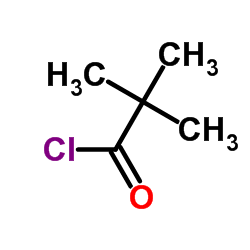
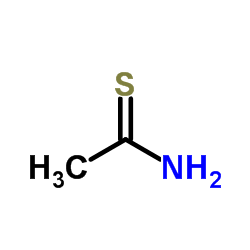
 CAS#:20278-31-3
CAS#:20278-31-3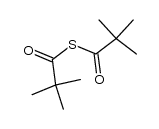 CAS#:36911-20-3
CAS#:36911-20-3 CAS#:600-57-7
CAS#:600-57-7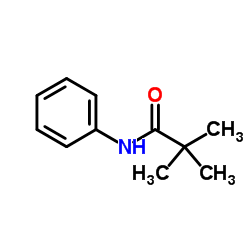 CAS#:6625-74-7
CAS#:6625-74-7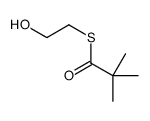 CAS#:153121-88-1
CAS#:153121-88-1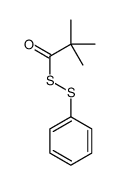 CAS#:31172-06-2
CAS#:31172-06-2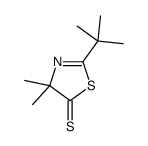 CAS#:122687-58-5
CAS#:122687-58-5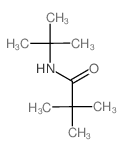 CAS#:686-96-4
CAS#:686-96-4 CAS#:646530-51-0
CAS#:646530-51-0